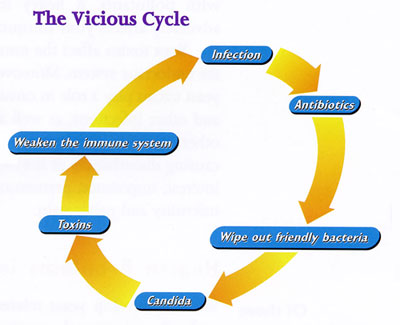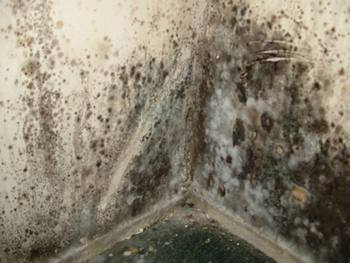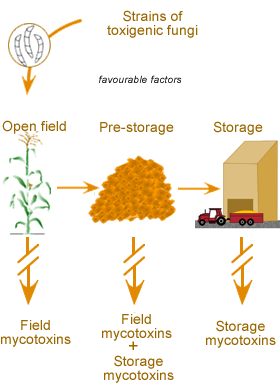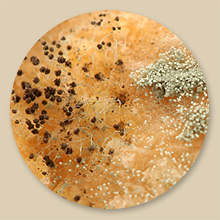|
Tonight Lynne and i watched a disturbing
TV program on the growing ineffectiveness of antibiotics,the
growing resistance to fungus and molds, parasites and bacteria,
below are some interesting facts to help you stay informed
And now there is ebola
???

| I read your op-ed in which you quoted what the
WHO official who coordinates research into what they
call microbial resistance was saying. Quote,
" A post-antibiotic era--in which
common infections and minor injuries can kill--far
from
being an apocalyptic
fantasy, is instead a very real possibility for the
21st century."
"Without urgent, coordinated action
by many stakeholders, the world is headed for a
post-antibiotic
era, in which
common infections and minor injuries which have been
treatable for decades can once again kill."
So this is very serious.
KHOR: To put it mildly, I would say that this crisis
is as serious to human life as the climate change
crisis that we are all trying to address and fighting
against.
So this is one
of the top two or three crises, I think, you know,
because my organization deals with all
kinds of crises, but I would rate this as one of
the most immediate crises, which, if we don't solve
soon, it will really get out of hand and millions
and millions of lives, including lives of people
in our own families, will be affected Source |

Health Effects and Symptoms Associated with Mold Exposure
There are four kinds of health problems that come from exposure to mold:
 Allergic
reactions Allergic
reactions
 Irritation
of tissues Irritation
of tissues
 Infections Infections
 Toxic
effects due to mycotoxins Toxic
effects due to mycotoxins
 Recent
studies have linked mold to the rapid rise of the asthma
rate over the past 20 years. Recent
studies have linked mold to the rapid rise of the asthma
rate over the past 20 years.
 A
1999 Mayo Clinic study implicates fungus as the
cause of almost all of the chronic sinusitus afflicting
37 million Americans. A
1999 Mayo Clinic study implicates fungus as the
cause of almost all of the chronic sinusitus afflicting
37 million Americans.
 Toxic
molds can increase your susceptibility to a
wide variety of diseases by weakening your
immune system. Toxic
molds can increase your susceptibility to a
wide variety of diseases by weakening your
immune system.
| "A large part of the problem is the overuse of
antibiotics to treat bacteria and other microorganisms
that are
quite resilient. They can develop ways to survive drugs
meant to kill or weaken them. In addition, research
has shown that antibiotics are given to patients in
excess of the recommendations of federal and other
health care organizations. And are often prescribed
to treat viral conditions that don't respond to antibiotics
at all. " |
What is Mold?
Molds are fungi that reproduce by releasing tiny spores
into the air. Spores lucky enough to land on moist objects
may begin to grow. There are thousands of different types
of mold and we encounter many of them every day, inside
and out.
Risks
to Health from
Moulds and Other Fungi
What is Toxic Mold?
Toxic mold is a type of mold that produces hazardous byproducts,
called mycotoxins. While individuals with asthma and other
respiratory problems may have reactions to many types of
mold, it's thought that mycotoxins are more likely to trigger
health problems in even healthy individuals. These toxins
are believed to be linked to memory loss and
to severe lung problems in infants and
the elderly. Floating particles of mold are invisible
to the naked eye, so it's impossible to see where they
might have landed unless they begin to grow. Loose mold
particles that accumulate on items within a house are easily
inhaled and can be a constant irritation to the people
and pets who live there.
| Believe it or not, families around the country
are fleeing their homes — or having them destroyed — because
of an insidious intruder they say is making them
sick. The invader? Black mold. Its technical name
is Stachybotrys chartarum — stachy for short — and
it's got a lot of people panicked. In Oregon , the
O'Hara family asked their local fire department to
burn their $450,000 home to the ground after black
mold was found inside. "It's basically just
a house that poisoned my family," Mark O'Hara
said. In Hawaii , a $95 million Hilton Hotel tower
has been closed since July because black mold was
found in some of the rooms. In a July 2001 story
Time magazine said toxic mold is spreading "like
some sort of biblical plague." The New York
Daily News called it "killer mold." Whatever
you call it, across the country, black mold is causing
people to abandon buildings, close schools and leave
beautiful homes sitting vacant. |

Virtually everyone has one type or another of mold somewhere
in their home. Although not all types are toxic, it is
sometimes difficult to distinguish types without lab testing.
Thus it is imperative to treat and remove all molds as
if they're potentially harmful. Regardless of the type
of mold found, a home containing mold is not essentially
a healthy
home. Mold spores are very easily transported to different
areas by attaching themselves to various hosts. These hosts
would include people, animals, shoes and they even enter
through open windows and doors. The spores then thrive
and grow where it is damp and moist. Very toxic molds can
develop from water seepage, and while black mold is "less
common than other mold species it is not rare."

| Mycotoxins are molecules produced by certain fungi
when in favourable ecophysiological conditions. They
can be toxic for humans and some animal species when
a certain quantity is ingested |
Fungi and their biological metabolites, the
mycotoxins, are silent and relentless attackers of human
health by causing the major "degenerative" and "cancerous" diseases
which plague mankind. Fungi are masters at producing a
wide array of biologically active substances which serve
the producing fungus extremely well. These biological metabolites
are anti-predatory and pro-territorial-protective and insure
the fungus will have a perpetual existence in a quite hostile
world. These metabolites are anti-viral, anti-bacterial,
anti-protozoan, anti-insect, anti-animal and, of course,
anti-human. These metabolites are referred to as the mycotoxins.
The term is derived from the Greek words "mykes" meaning
fungus, and "toxicum," meaning toxin or poison.
"The bacteria that cause gonorrhea, urinary
tract infections (UTIs), sepsis (severe blood infections),
pneumonia, and diarrhea have developed to often resist
the use of antibiotics and in large percentages,
have become unaffected by powerful drugs used as “last
resort” medications when the others fail."
"Antibiotic resistance is a “major
threat to public health,” says Dr. Keiji
Fukuda, Assistant Director-General for Health Security
at WHO" |
The major "naturally occurring carcinogens" present
in food which are well documented to cause cancer are the
fungi and their toxins. Furthermore, they are variably
present such that the involved food correlates with cancer
when fungal colonization and mycotoxin contamination is
maximal, and does not when it is minimal or absent.
Cancer is
Fungus1
Mycotoxicoses are diseases caused by mycotoxins, i.e. secondary metabolites
of molds. Although they occur more frequently in areas with a hot and
humid climate, favorable for the growth of molds, they can also be
found in temperate zones. Exposure to mycotoxins is mostly by ingestion,
but also occurs by the dermal and inhalation routes. Mycotoxicoses
often remain unrecognized by medical professionals, except when large
numbers of people are involved

It has already been documented that large percentage of German
adults have ochratoxin in
their blood, that leukemic children have aflatoxin in
their blood, that patients with urinary tract cancers
have ochratoxin in their blood, that patients with Crohn's
Disease have aflatoxin in their blood, and finally, 18
to 90 % of nursing mothers have mycotoxins in their breast
milk. Obviously, the problem of mycotoxins in human health
is quite real and requires full elucidation, particularly
since we all know that food is in some way connected
to the major disease of humans.
Cancer is
Fungus 2
Fungi are plant-like organisms that lack
chlorophyll. Fungi are one of the five kingdoms of life.
Many fungi are good and useful (edible mushrooms would
be an example of these) while some cause problems (some
fungi can injure plants and people). There are over 100,000
species of fungi.
Bacteria have started circumventing the treatments
by evolving defense mechanisms that “destroy
the antibiotic in order to protect themselves,” said
Stuart Levy, chair of the board of the Alliance for
the Prudent Use of Antibiotics at Tufts University
School of Medicine, in Boston. The growing number
of ineffective treatments of antibiotic resistant
bacteria shows that they are changing more rapidly
than medical science can keep up. “Genetics
is working against us, almost like a science-fiction
story.” He explained they have developed a
resistant gene against the drug which protects them. “A
bacteria may have developed resistance to five or
six antibiotics, so in treatment, you don’t
know which one to choose.” Source |
Do
You Have a Toxic Mold/Fungus in your body?
Since they do not have chlorophyll, fungi must absorb
food from others. Since they don't use light to make food,
fungi can live in damp and dark places. Fungi
are supposed to "eat" things when they are dead
but sometimes they start eating when the organism is still
alive.
Are you suffering from Allergic
Fungal Sinusitis. Allergic Fungal Sinusitis is a disorder
in which airborne fungus enter into the nasal passages
causing irritation, swelling, sneezing, itchy watery
eyes, congestion, cough and nasal polyps. Many people
are unaware that they have an allergy to airborne fungus
and mold however a simple blood test can identify the
presence of these fungal spores.
Portable
Nebuliser and Heavy Duty Colloidal Silver
Generator>>>Here |
|
Heavy
Duty Colloidal Silver Generator
Portable
Nebuliser and Heavy Duty Colloidal
Silver Generator>>>Here
|
|
Bad fungus is just good fungus trying to do its job way
too early to an organism. Most commonly, fungi cause something
to happen on the skin of animals or people.
FUNGAL/MYCOTOXIN-RELATED
DISEASES
| COLCHICINE-RESPONSIVE: |
Acute Gouty Arthritis
Alcoholic Cirrhosis
Familial Mediterranean Fever
Mollaret's Meningitis
Bechet's Syndrome
Psoriasis
Thrombocytopenic Purpura
Chronic Lymphocytic Leukemia
Amyloidosis North African
Leukocytoclastic Vasculitis
Sarcoid Arthritis
Rheumatoid Arthritis (some)
Calcium Pyrophosphatopathy
Hyperlipidemia
Inflammatory Bowel Disease |
| COLCHICINE-RESPONSIVE IN EXPERIMENTAL ANIMALS: |
Atherosclerosis
Casein-Induced Amyloidosis
Cushing's Disease |
| NYSTATIN-RESPONSIVE: |
Psoriasis
Inflammatory Bowel Disease
Hyperactivity Syndrome
Multiple Sclerosis |
| TAXOL-RESPONSIVE: |
Breast Cancer
Ovarian Cancer |
| GRISEOFULVIN-RESPONSIVE: |
Atherosclerosis (Angina)
Systemic Sclerosis
Raynaud's Syndrome/Disease
Shoulder-Hand Syndrome
|
| ALLOPURINOL-RESPONSIVE: |
Sarcoidosis
Oxalate Nephrolithopathy
Idiopathic Respiratory Distress
Syndrome/Newborns
Duchenne’s Muscular Dystrophy
|
| KETOCONAZOLE-RESPONSIVE: |
lnflammatory Bowel Diseases
Disseminated Vascular Coagulation
Idiopathic Female Infertility
Precocious Puberty In BoysHyper-Low-Density
Lipoproteinemia
Hyperaldosteronism
Prostatic Carcinoma
|
| TAMOXIFEN-RESPONSIVE: |
Breast Cancer
Note: The antifungal nature of
colchicine, allopurinol, tamoxifen,
and taxol is fully documented. |
Mold is everywhere;
inside and outside. Some molds are good (penicillin), some
are very toxic and emit gases that can be inhaled (Stachybotrys “black
mold”). Although some people apparently aren’t
bothered by mold, all varieties have the potential to cause
illness. Mold reproduces by generating spores that are
released into the air, where they land on moist surfaces.
They can grow on any organic surface such as wallpaper,
ceiling tiles, carpeting, wallboard and wood. They thrive
in dark, warm, moist locations, like under carpets, inside
walls and ceilings. They will also contaminate items that
come in contact with those surfaces.
| Toxicity caused by mycotoxins is significantly
reduced by increasing the amount of fiber in the
diet. This is done by increasing the amount of vegetables
in the diet. While fruit is also a source of fiber,
the high sugar (fructose) content of fruit stimulates
fungal growth (fructose increases blood cholesterol
and uric acid levels which are associated with increased
risk of hypertension and atherosclerosis). |
Mold can trigger allergic
reactions and asthma attacks in many. Complaints of flu-like
symptoms, chronic fatigue syndrome, memory impairment,
migraines, sick building syndrome, dizziness and nosebleeds
are common. These are the mild symptoms. Many researchers
claim that mold can attack several main body systems, including
the brain, central nervous and immune systems and have
been the direct cause of some deaths. Regardless of where
you stand on this issue, who wants to smell mold/mildew
and inhale spores from household fungus? They can lodge
in your lungs (remember dark, warm and moist). Asthmatics,
infants and individuals suffering immune system deficiencies
are particularly susceptible.
There is a connection between candida and
cancer – so asserts Doug Kaufmann, author
and expert on nutrition who has studied yeast infections
and candida for over 30 years. Kaufman’s
studies demonstrate that fungi in foods, as well
as the overuse of antibiotics, lead to intestinal
overgrowth that can compromise our health in many
ways, including cancer,,
… candida/yeast/fungus overgrowth that comes in its wake can be lethal.
And this drug-induced imbalance in the intestinal flora is a reality, to different
degrees, in a huge percentage of the population.
Systemic Yeast Infection is a menace.
Clear Away Your Systemic Yeast Infections Now
Before You Suffer.

|

Three levels of yeast infection can
be defined, in order of severity:
 1.
Occasional Candida infection (for example, oral
thrush, male candidiasis, vaginal candidiasis),
occurring once or more in a lifetime in 75% of
the population, particularly women and infants. 1.
Occasional Candida infection (for example, oral
thrush, male candidiasis, vaginal candidiasis),
occurring once or more in a lifetime in 75% of
the population, particularly women and infants.
 2.
Chronic or recurring Candida infection, possibly
a symptom of more fundamental problems such as
a malfunctioning immune system. 2.
Chronic or recurring Candida infection, possibly
a symptom of more fundamental problems such as
a malfunctioning immune system.
 3.
Systemic yeast infection, affecting the whole body
and not just one part, generating symptoms such
as fatigue, lethargy, debilitation, dizziness,
sensory disorders, gastrointestinal problems like
oral Thrush, headaches from migraine, muscular
pain, breathing disorders, diarrhea, constipation
and rectal itching. 3.
Systemic yeast infection, affecting the whole body
and not just one part, generating symptoms such
as fatigue, lethargy, debilitation, dizziness,
sensory disorders, gastrointestinal problems like
oral Thrush, headaches from migraine, muscular
pain, breathing disorders, diarrhea, constipation
and rectal itching.
The causal agent of all yeast infection
subtypes is Candida, a fungus. Candida lives in
a healthy body in small amounts anyway: as such,
these are not dangerous. However, when certain
circumstances are rise to provoke the multiplication
of Candida, the overgrowth means that the bacteria
then get into the bloodstream from the intestines
and provoke the symptoms of the yeast infection.
This is why we also call the yeast infection a
Candida infection, or candidiasis.Source
|
The fungal fermentation processes, such as
making bread, beer, wine, cheese, smokinq/chewinq
tobacco, aqinq/curinq meats, etc. , constitutes
yet another part of the human food chain which
places humans at potential risk. Bread has been
recently epidemiologically incriminated as a cause
of breast cancer in Japan and atherosclerosis in
the United States.
Source |
Finally, fungi can be helpful and not helpful,
but they all are important and required in life. Fungi
are one of the earth's big recyclers. Without them we could
not live, and sometimes humans die because of them, but
they are very important and required in life.

Household
Cleaning and Infection Control (home fungus infections):
Use Ozonated water to mop your floors. Wipe down furniture, doors and windows
to eliminate moldy bacteria, fungus infection (and prevention) and peculiar
smells and to efficiently restrain the growth of bacteria. It can be used
in the home as well as at work, especially in doctors’ offices, hospitals,
nursing homes, child care centers, schools, (or anyplace where large numbers
of people gather—to prevent cross infection through vigorous, new “strange” pathogens).

|
 Sterilizing
Fruit, Vegetables: Sterilizing
Fruit, Vegetables:
Sterilizing the outer surface of fruits and vegetables with Ozonated
water can remove farm chemicals, chemical fertilizer, kill exterior
bacteria fungus,
 Eliminate
dangerous bacteria in meat and poultry: Scientists
also recommend washing the outer surface of meat,
fish, and shrimp with Ozonated water to decompose
leftover hormones and antibiotics, to get rid of
bacteria and pathogenic worms, which will make
the meat safe and fresh. Eliminate
dangerous bacteria in meat and poultry: Scientists
also recommend washing the outer surface of meat,
fish, and shrimp with Ozonated water to decompose
leftover hormones and antibiotics, to get rid of
bacteria and pathogenic worms, which will make
the meat safe and fresh.
 Dangerous
E.Coli and Salmonella bacteria thrive in poorly
refrigerated, frozen, and stored meat and poultry—sometimes
leading to food poisoning, or worse! To make sure
your meat and poultry is bacteria free, place the
thawed meat in Ozonated water for 5-10 minutes.
This simple procedure can restrict the reproduction
of bacteria (and maintain the original natural
taste of your beef, chicken, etc). Water
Ozonator Dangerous
E.Coli and Salmonella bacteria thrive in poorly
refrigerated, frozen, and stored meat and poultry—sometimes
leading to food poisoning, or worse! To make sure
your meat and poultry is bacteria free, place the
thawed meat in Ozonated water for 5-10 minutes.
This simple procedure can restrict the reproduction
of bacteria (and maintain the original natural
taste of your beef, chicken, etc). Water
Ozonator
Fruit and vegetable washer Ozonator
|
Dietary changes can bring immediate alleviation,
but it is in together with a full program of holistic treatment
for systemic yeast infection (such as Blood Zapping,ozonating,
homeopathic remedies, changes in diet, lifestyle and detoxification)
that this works much better than most classical treatments
that only act superficially for this condition. It is the
holistic approach that enables the treatment of the hidden
reasons for systemic yeast infection.
Stop
this Vicious Cycle

CLEAN YOUR
BLOOD
of
Parasites
Fungi Yeast and Mold
Our Latest
High Power Multi-Pulsar
Delux Parasite Fungus Yeast and Mold Complete
Package
Multipulser v2
+ Water Ozonator /
Ioniser

|

